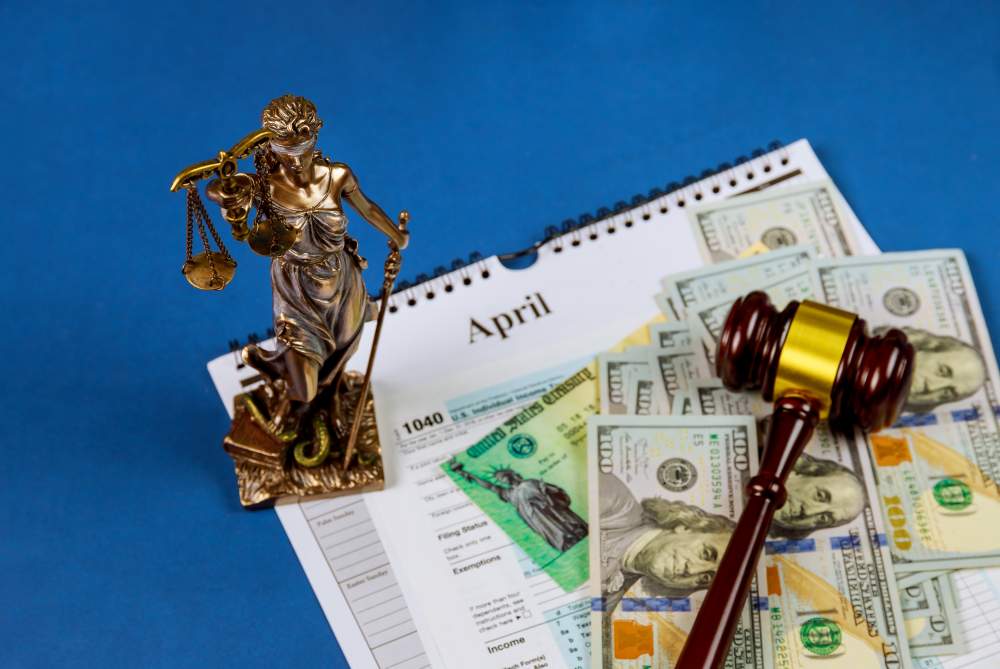What Is the Average Pedestrian Accident Settlement in California?

The average payout for a pedestrian hit by a car in California ranges between $10,000 and $75,000; these amounts are widely variable depending on the nature of the accident.
Pedestrian accidents are an unfortunate reality in California, where busy streets and high traffic volumes often lead to tragic incidents. This article explores the factors influencing settlement amounts, common injuries, and the legal process for obtaining compensation.
Who Is Considered a Pedestrian in California?
Under California law, a pedestrian is defined as anyone traveling on foot or using a non-motorized conveyance. This includes individuals on roller skates, rollerblades, skateboards, and non-motorized scooters. People using crutches, knee walkers, or manual and motorized wheelchairs are also considered pedestrians. Essentially, any person not using a motorized vehicle fits into this category, except for cyclists, who are usually classified as motorists.
Understanding this definition is vital as it establishes the rights and protections afforded to pedestrians under state law. For example, California law grants pedestrians the right-of-way at intersections, meaning drivers must yield to them when they are crossing streets legally.
Factors Influencing Settlement Amounts
A pedestrian’s settlement amount after being hit by a car in California can vary widely based on several factors. These include:
1. Severity of Injuries: The most significant factor is the extent of the injuries sustained. Minor injuries may result in settlements ranging from $10,000 to $75,000. However, settlements for moderate to severe injuries can range from $100,000 to $1,000,000 or more.
2. Medical Treatment Required: The type and duration of medical treatment required also play a critical role. Prolonged hospitalization, surgeries, rehabilitation, and ongoing medical care significantly increase the settlement amount.
3. Long-term Impact and Future Medical Expenses: Injuries resulting in long-term or permanent disabilities lead to higher settlements due to future medical expenses and loss of quality of life.
4. Loss of Income and Earning Capacity: If the accident results in the victim being unable to work temporarily or permanently, the settlement will include compensation for lost wages and diminished earning capacity.
5. Pain and Suffering: This non-economic damage accounts for the physical pain and emotional distress experienced by the victim. Calculating this can be complex but significantly impacts the total settlement amount.
6. Insurance Coverage of the At-fault Party: The insurance policy limits of the at-fault driver can also determine the settlement amount. If the at-fault driver has minimal insurance, the settlement may be lower unless the victim pursues additional compensation through a personal injury lawsuit.
Common Injuries
Pedestrian accidents often result in severe injuries due to the vulnerability of individuals on foot compared to those in vehicles. The following are common injuries sustained in such accidents:
Head and Brain Injuries
Concussions and Traumatic Brain Injuries (TBI): Head injuries are among the most severe consequences. Concussions, which are a form of mild traumatic brain injury, occur when the brain is jolted inside the skull due to a sudden impact. Symptoms can include headaches, confusion, dizziness, and sometimes loss of consciousness.
Severe TBIs can lead to long-term or permanent cognitive and physical impairments. Victims may experience memory loss, difficulty concentrating, and changes in behavior or personality. In extreme cases, TBI can result in a coma or death.
Rehabilitation for TBI often requires extensive medical treatment, including physical therapy, occupational therapy, and speech therapy.
Spinal Cord Injuries
Spinal cord injuries can have devastating consequences, leading to partial or complete paralysis. These injuries occur when the spinal cord is damaged, disrupting the communication between the brain and the rest of the body. The extent of paralysis depends on the location and severity of the injury.
Injuries higher on the spinal cord can result in quadriplegia, affecting all four limbs, while lower injuries may result in paraplegia, affecting only the lower half of the body. Treatment for spinal cord injuries often involves surgery to stabilize the spine, followed by extensive rehabilitation to help the victim regain as much function as possible.
Long-term care may include the use of wheelchairs, mobility aids, and modifications to the living environment.
Fractures and Broken Bones
Fractures are common due to the direct impact with the vehicle and the ground. The pelvis, legs, arms, and ribs are particularly susceptible to breaking. Fractures can vary in severity from simple breaks, which may only require casting, to complex fractures needing surgical intervention with pins, plates, or screws.
The recovery process for fractures can be lengthy and painful, often involving immobilization, physical therapy, and, in some cases, multiple surgeries. Complications such as infections or improper healing can prolong recovery and lead to further medical issues.
Cuts and Lacerations
These types of accidents frequently result in cuts and lacerations due to the impact and friction with the vehicle and road surface. These injuries can range from minor abrasions to deep lacerations that require stitches or surgery. Significant blood loss from deep cuts can be life-threatening and necessitate immediate medical attention.
Lacerations can leave lasting scars, impacting the victim’s appearance and psychological well-being. Treatment may involve wound care, plastic surgery, and ongoing skin treatments to minimize scarring and promote healing.
Internal Injuries
Internal injuries are not always immediately apparent but can be life-threatening. Pedestrian accidents can cause damage to internal organs such as the liver, spleen, kidneys, and lungs. Internal bleeding can occur, which may not be visible, but requires urgent medical intervention to prevent serious complications or death.
Diagnosing internal injuries often involves imaging tests such as CT scans or MRIs. Treatment may include surgery to repair damaged organs and blood transfusions to replace lost blood.
Wrongful Death Cases
In the most tragic cases, pedestrian accidents result in fatal injuries. Families of the deceased may pursue wrongful death claims to seek compensation for their loss.
These accident cases involve legal proceedings to prove that the negligence of the driver caused the pedestrian’s death. Compensation can cover funeral expenses, loss of income, and emotional suffering of the surviving family members.
Comprehensive Care and Support
Recovering from pedestrian accident injuries often requires a multi-disciplinary approach involving various healthcare professionals. Victims may need:
- Emergency Medical Services: Immediate care to stabilize injuries and prevent further complications.
- Surgical Interventions: Procedures to repair broken bones, internal injuries, and other critical damage.
- Rehabilitation Services: Long-term therapy to help victims regain mobility, strength, and independence.
- Psychological Support: Counseling and therapy to address the emotional trauma and mental health impact of the accident.
Ensuring that victims receive comprehensive care is crucial for their recovery and quality of life. Legal representation can also play a vital role in securing the necessary compensation to cover medical expenses and support services.
Legal Process for Seeking Compensation
Victims of pedestrian accidents need to take specific steps to ensure they receive fair compensation. These include:
1. Immediate Actions After the Accident: Victims should seek medical attention immediately, even if injuries seem minor. Documenting the injuries and receiving prompt treatment is crucial for both health and legal reasons. Additionally, gathering evidence from the accident scene, such as photographs and witness statements, can be invaluable.
2. Contacting a Personal Injury Attorney: Engaging a car accident lawyer early in the process is essential. An attorney can provide guidance, handle communications with insurance companies, file an accident claim, and protect the victim’s rights.
3. Negotiating with Insurance Companies: Insurance companies often attempt to settle claims quickly and for the least amount possible. An experienced attorney can negotiate with the insurance company to secure a fair settlement that adequately compensates the victim for their injuries and losses.
4. Filing a Personal Injury Lawsuit: If the insurance company’s pedestrian accident settlement offer is insufficient, the victim may need to file a personal injury lawsuit. This legal action seeks additional compensation for medical expenses, lost wages, pain and suffering, and other damages. The lawsuit process involves proving that the at-fault driver was negligent and directly caused the injuries.
5. Proving Negligence: To succeed in a personal injury lawsuit, the victim must demonstrate that the driver was negligent. This could include evidence that the driver was distracted, speeding, or violating traffic laws at the time of the accident.
FAQs
Can a Pedestrian Be at Fault in an Accident?
Yes, pedestrians can be found partially or entirely at fault in some accidents. For instance, if pedestrians jaywalk (do not use a designated crosswalk) or cross a street against a signal, they may share responsibility for the accident. However, even if pedestrians are partially at fault, they can still seek compensation under California’s comparative negligence laws.
What to Do if You Hit a Pedestrian?
If you hit a pedestrian, stopping immediately, providing assistance, and calling emergency services is crucial. Cooperating with law enforcement and exchanging information with the pedestrian is also essential. It is advisable to contact a lawyer to manage the legal implications and protect your interests.
How Is Pain and Suffering Calculated in California?
Pain and suffering compensation in California can be calculated using two primary methods: the per diem approach or the multiplier method. The per diem approach assigns a daily rate for the victim’s suffering, which is multiplied by the number of days the victim is expected to endure pain. The multiplier method involves multiplying the victim’s economic damages by a factor that reflects the severity of their suffering, typically ranging from 1.5 to 5 or higher.
Is It Worth Hiring an Accident Attorney?
Hiring a personal injury attorney significantly increases the chances of obtaining a fair settlement. Attorneys have the expertise to handle legal issues, negotiate with insurance companies, and pursue additional compensation through lawsuits if necessary. Victims represented by a law firm generally receive higher settlements than those who handle claims independently.
Pedestrian accident settlements in California can vary highly due to the nature of these types of accidents. Understanding the factors influencing settlement amounts, common injuries, and the legal process is crucial for victims seeking compensation.
Engaging a personal injury attorney ensures victims receive the support and representation they need to secure a fair settlement. If you or a loved one has been involved in a pedestrian accident, don’t hesitate to seek legal advice and explore your options for obtaining the compensation you deserve.
For personalized assistance and legal representation, contact Benji Personal Injury. Our team of experienced attorneys is dedicated to helping you navigate the legal process and achieve the best possible outcome for your case.

 AVAILABLE 24/7
AVAILABLE 24/7


